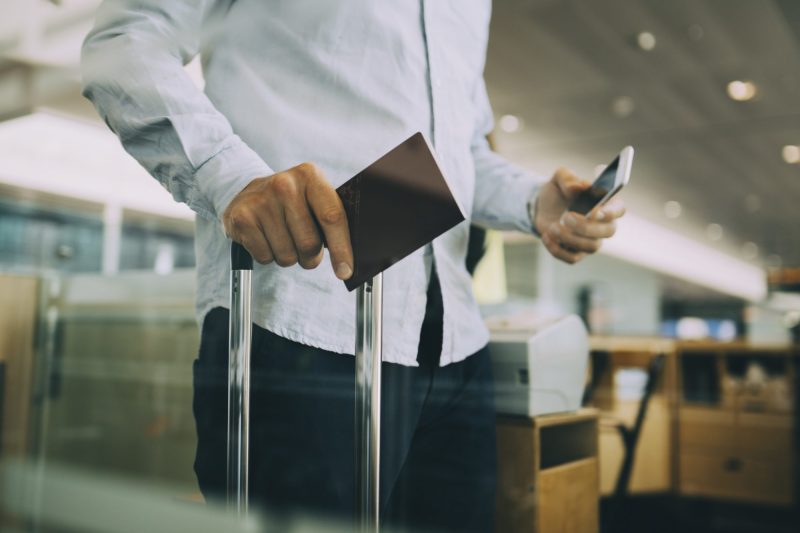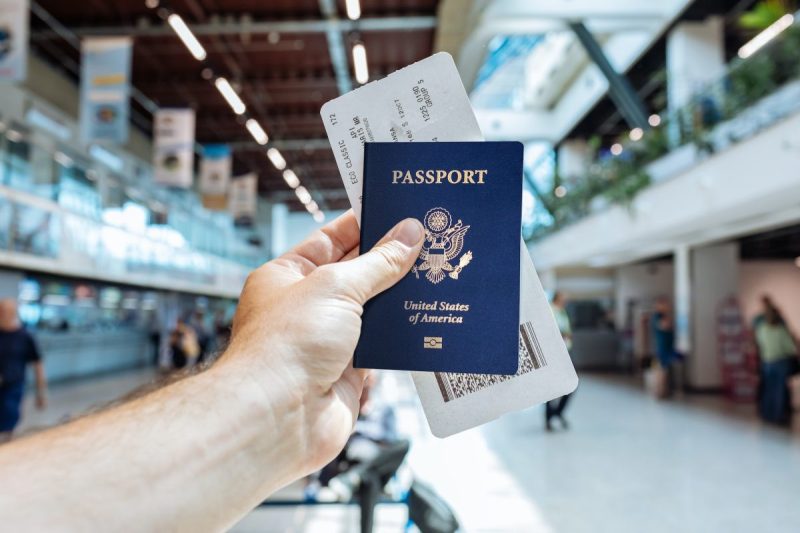Have you been hearing about the REAL ID program for quite some time now but aren’t really sure what all the fuss is about? That was my situation, too, until I realized the deadline to get a REAL ID was fast approaching, and I needed to get up to speed, especially if I wanted to fly anywhere. That got me wondering – what’s the difference between a passport vs. REAL ID? And when do I actually need each one? If you’re asking the same questions, here’s a breakdown of everything you need to know so you can decide what works best for you.
What is a passport?

A passport is your ticket to international travel. It’s an official government document that proves your identity and citizenship. And without a passport, you’re not getting far beyond U.S. borders.
Issued by the U.S. Department of State, your passport includes your name, photo, birthdate, and other personal details. It also has pages for visas and stamps from other countries. Basically, it’s the one thing you absolutely need if you’re heading abroad.
Your passport can also be used as a form of ID for domestic purposes, like opening a bank account or proving your identity when applying for other official documents.
What is a REAL ID?

A REAL ID is a newer version of your state-issued driver’s license or ID that meets federal security standards. After the REAL ID Act passed in 2005 (in response to 9/11), states started issuing these IDs to help make identity verification more secure. According to the Department of Homeland Security (DHS), the REAL ID is intended to “set standards for the issuance of sources of identification, such as driver’s licenses and identification cards.”
Here’s the deal: according to the DHS, starting May 7, 2025, you’ll need a REAL ID (or another TSA-approved form of ID, like a passport) to board domestic flights or enter certain federal buildings.
REAL IDs look almost identical to your regular license, but you’ll notice a star in the top right corner; that’s how you know it’s the real deal.
Passport vs. REAL ID: What’s the difference?

So here’s the bottom line: Both a passport and a REAL ID are government-issued IDs, but they serve different purposes.
A passport is your go-to ID for international travel. It proves your citizenship and lets you cross borders. You’ll need a valid passport if you’re heading anywhere outside the U.S., like Mexico, Europe, or Canada. It also works as a valid ID at airports, banks, or when applying for certain things domestically.
A REAL ID, on the other hand, is a beefed-up version of your driver’s license or state ID. Starting May 7, 2025, you’ll need a REAL ID (or another TSA-approved form of ID, like a passport) to board domestic flights or enter certain federal buildings. You’ll know it’s a REAL ID if there’s a little star in the corner of your card.
In short:
- Use a passport when leaving the country.
- Use a REAL ID when flying within the U.S. or accessing certain federal locations.
- You can have both, and in some situations (like domestic flights), you can choose which one to use.
When do you need a passport?

Here’s when you’ll definitely need that little blue book:
- Any international trip. If you’re leaving the U.S., you’ll need a valid passport to enter another country and get back home. You can also use a passport as a valid form of ID for domestic flights.
- Proving U.S. citizenship. A passport is helpful for getting visas or other legal paperwork done.
- Emergencies abroad. If you lose your passport overseas, the U.S. embassy can issue a temporary one so you can get home.
When do you need a REAL ID?
Starting in May 2025, this will be your go-to ID for:
- Domestic flights. TSA will be checking for that star on your license before you board.
- Federal buildings and military bases. Some locations already require it for entry.
- General ID purposes. Like driving, proving your age, or picking up a prescription.
To get one, visit your state’s DMV and bring documents like your birth certificate or passport, a Social Security card or W-2, and proof of address (like a utility bill or lease). Requirements can vary slightly by state, so checking your DMV’s website before you go is a good idea.
Can you use both a passport and a REAL ID for travel?

Definitely. In fact, a lot of people choose to carry both a passport and a REAL ID, depending on the situation. Think of it like this:
- Flying within the U.S.? A REAL ID is enough (starting May 2025).
- Flying outside the U.S.? You’ll need a passport – REAL ID won’t cut it.
- Need to prove your citizenship or apply for something official? Passport.
- Need an everyday driver’s license or a way to get through airport security on a domestic trip? REAL ID.
So yes, both a passport and a READ ID have their place. And ideally, you’ll have both on hand when you need them.




